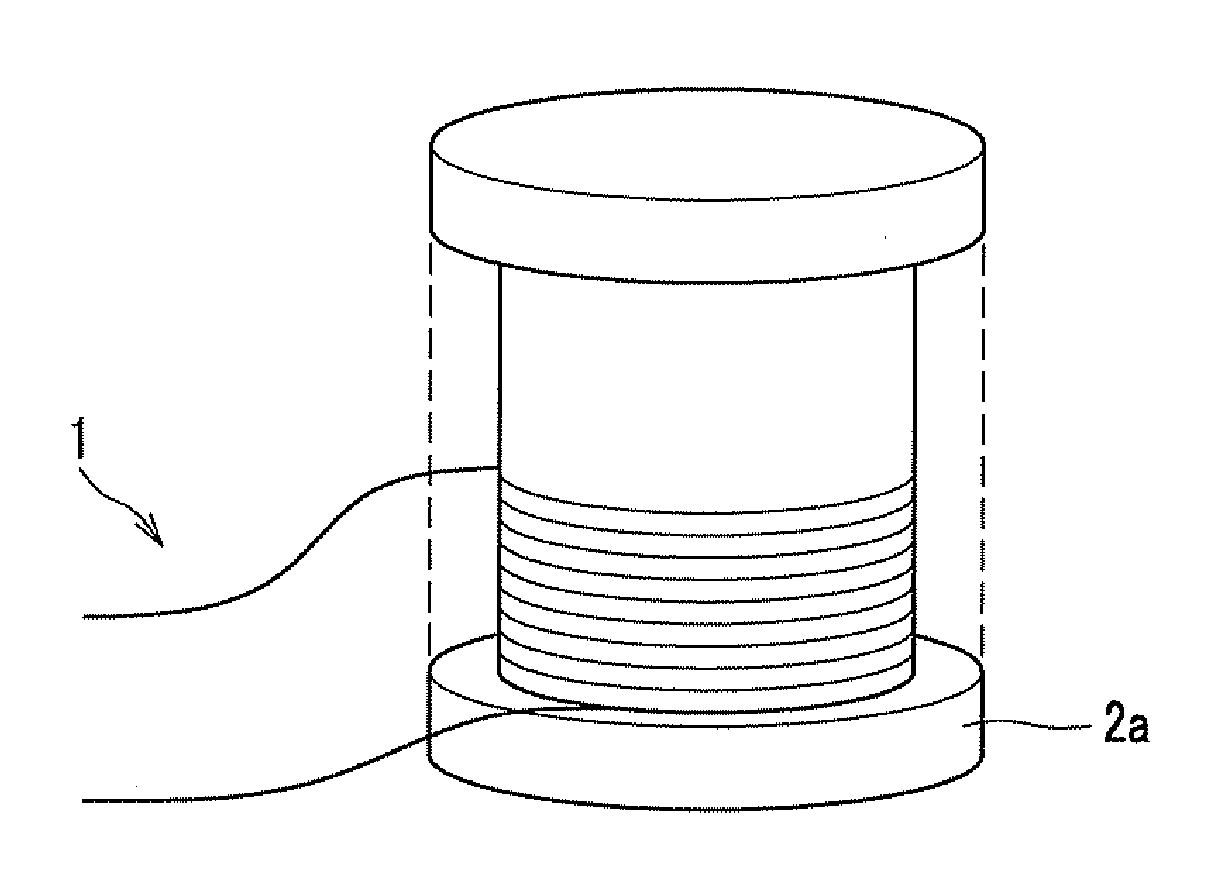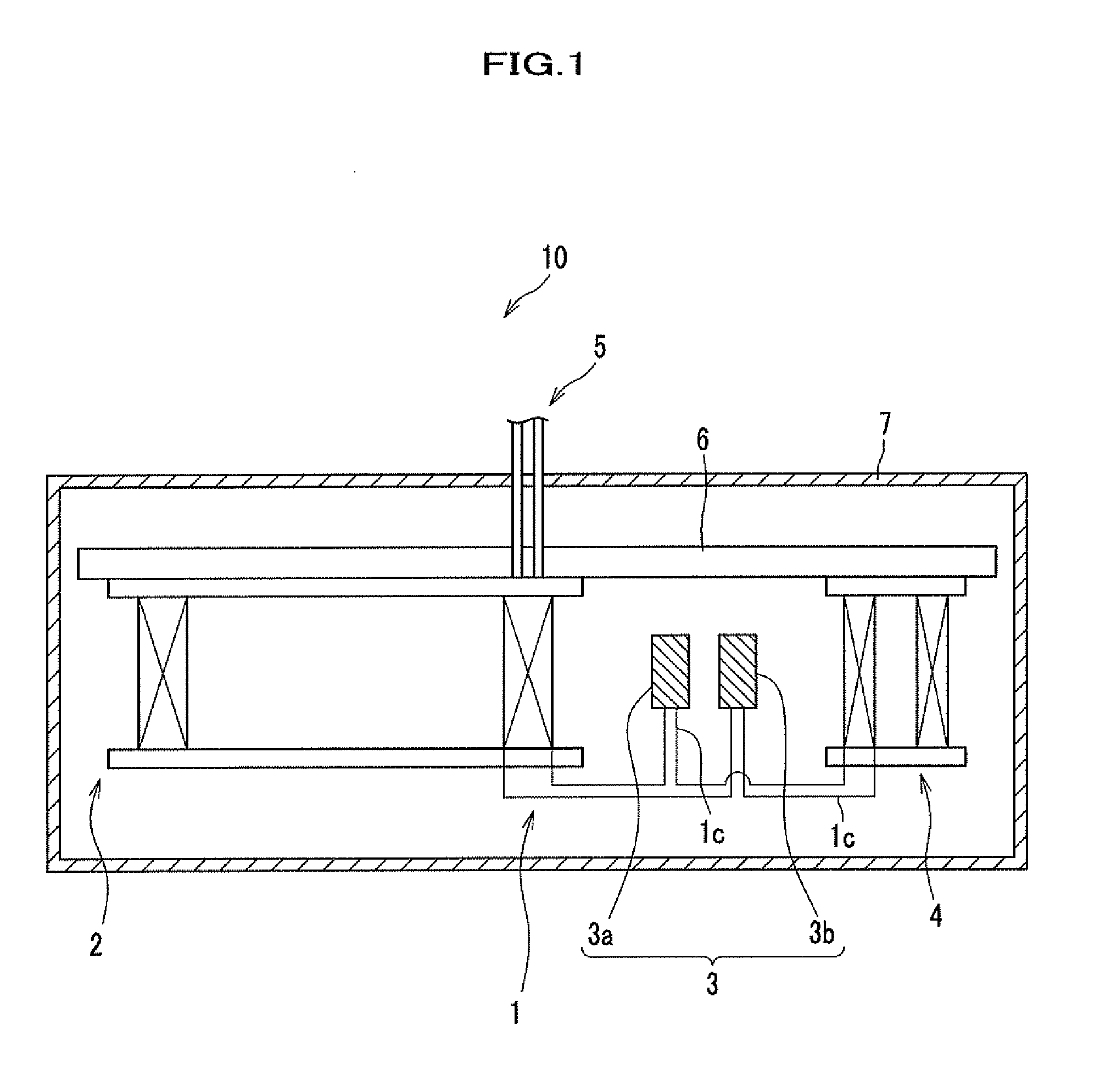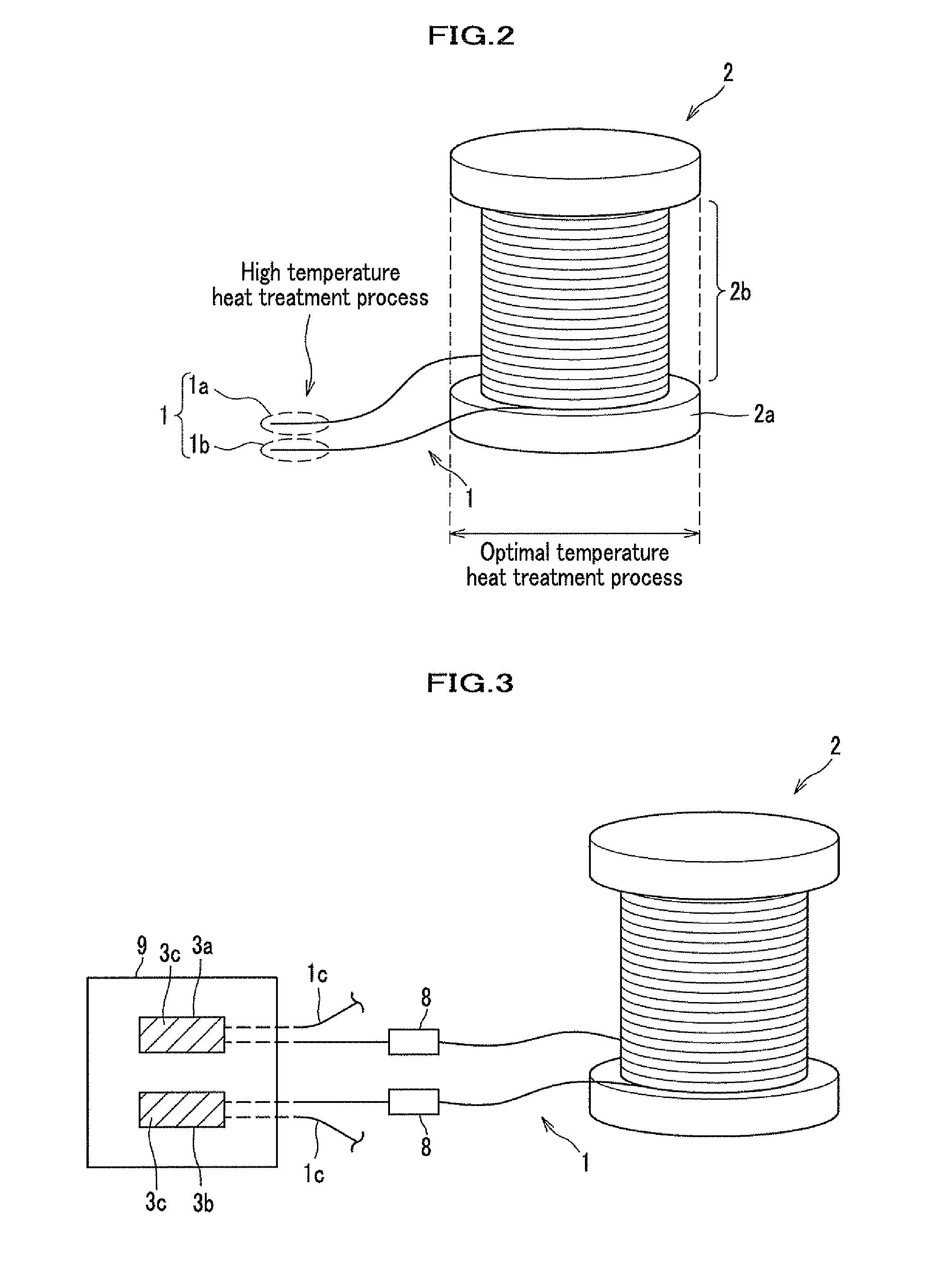Superconducting magnet and method of producing same
a superconducting magnet and superconducting coil technology, applied in the direction of superconducting magnets/coils, magnetic bodies, connection contact material materials, etc., can solve the problems of insufficient utilization of superconducting wire characteristics, poor connectivity between magnesium diboride particles, and inability to provide the required conductivity characteristics, etc., to achieve the effect of suppressing the suppression of conductive characteristics
- Summary
- Abstract
- Description
- Claims
- Application Information
AI Technical Summary
Benefits of technology
Problems solved by technology
Method used
Image
Examples
examples
[0097]The present invention will be described in detail with examples.
[0098]According to the producing method described above, the superconducting wire 1 comprising magnesium diboride with a circular shape having a diameter of 0.7 mm in a cross section, is prepared. Then, the superconducting magnet 10 shown in FIG. 1 is produced with the prepared superconducting wire 1.
[0099]To sinter the mixture powder of magnesium and boron, it is preferable to carry out the heat treatment process generally at a temperature in a range from 500 to 800° C., more preferably, in a range from 600° C.-700° C. From a result of an experiment by the inventors showed that a heat treatment temperature particularly preferable for the superconducting wire 1 having the diameter of 0.7 mm is 630° C. Accordingly, an optimum heat treatment temperature was set to be 630° C. for the winding part 2b in the first heat treatment process.
[0100]The heat treatment process is carried out for the ends 1a, 1b of the prepared...
PUM
| Property | Measurement | Unit |
|---|---|---|
| temperature | aaaaa | aaaaa |
| transition temperature | aaaaa | aaaaa |
| operating temperature | aaaaa | aaaaa |
Abstract
Description
Claims
Application Information
 Login to view more
Login to view more - R&D Engineer
- R&D Manager
- IP Professional
- Industry Leading Data Capabilities
- Powerful AI technology
- Patent DNA Extraction
Browse by: Latest US Patents, China's latest patents, Technical Efficacy Thesaurus, Application Domain, Technology Topic.
© 2024 PatSnap. All rights reserved.Legal|Privacy policy|Modern Slavery Act Transparency Statement|Sitemap



